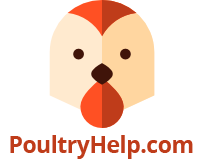Incubation and Hatching Procedures
Welcome to our "hatchery". We'll give you a quick tour. The room is a small bedroom about 10' x 12'. The GQF Sportsman Cabinet incubator model 1503 is in the back left corner. The 1503 is just like the popular 1202 except that it's equipped with the multi-turn electronic thermostat. We've also added the automatic humidity option. The water tray in the incubator is kept full from the 5 gallon bucket on top. We bought the Sportsman in Nov. of 1998 and it hasn't been empty or turned off since. We usually have at least 4 or 5 batches of eggs in there at different stages of development. Each group of eggs has a 2"x3" card stuck in with them marked with the date of moving to the hatcher and the projected hatch date.
Along the back wall next to the Incubator are three folding tables for the hatchers and brooders. We have 4 styrofoam GQF fan-equipped Hovabators that we use as hatchers (no turners). We set them up as we need them to save room. We have a calendar up in the kitchen where we mark the dates eggs move from the incubator to one of the Hovabators (three days before hatch) and hatch dates are marked as well. Using the Hovabators as hatchers allows us to keep the cabinet incubator full all the time and to set numerous batches of eggs in it at the same time. We also don't "foul" the bottom of the incubator by using the hatch tray in there. We just wipe it out once in a while instead of having to empty it and give it a good cleaning and sanitizing after each hatch.
Instead of purchasing expensive electric brooders we use 90 quart Rubbermaid Storage containers ($8 from Walmart). I used a soldering iron with a flat tip to cut the center out of some of the tops, and hot-glued 1/2" welded wire mesh in it's place. That way we use one of the modified covers across the back of two storage containers and set 100 watt red flood lamps ($6 each at Lowe's) in reflectors on top of them. This provides very near the correct temp for the brooders, and if the chicks get too hot, they move to the front of the containers. We use the full un-modified cover across the front of the containers, so the chicks don't jump out. For details on building these brooders, CLICK HERE.
We line the bottom of the storage containers with about four layers of paper towels for footing. This helps prevent "spraddle leg" in chicks. We use quart size plastic waterers with non-drowning bases in the brooders and 6" round galvanized feeders, the type that use a mason jar on top to hold the feed. The Rubbermaid containers are super easy to clean. We just take them out in the back yard and rinse them out with a hose, then wipe with disinfectant solution (Tektrol), put in new paper towels and they're ready to go again. We can house about 30 baby chicks or 50 baby quail in each of these for the first two weeks or so. Once the chicks feather out and no longer need supplemental heat (4-5 weeks) we move them into the 2'x3' cages in the new barn.
The room we're now using as a hatchery is a small "extra" bedroom in the house that used to be our game room, hence the tournament dartboard and beer signs... There are some neon beer signs in the room too! Justine and I used to love to play darts and I'd even let her win once in a while. We have about 30 sets of darts, all weights and sizes. We haven't been able to play since the room became a fowl "nursery". You can just see the edge of a round card table in the lower right corner of this picture... It now has two more Hovabators on it instead of cards. The boxes under the brooders are storage for incubation supplies such as the plastic egg setting trays for the Sportsman incubator in four sizes: quail, bantam/pheasant, chicken and duck/goose/peafowl. We also have a small portable vacuum down there for quick cleanups. This arrangement works quite well for us.
